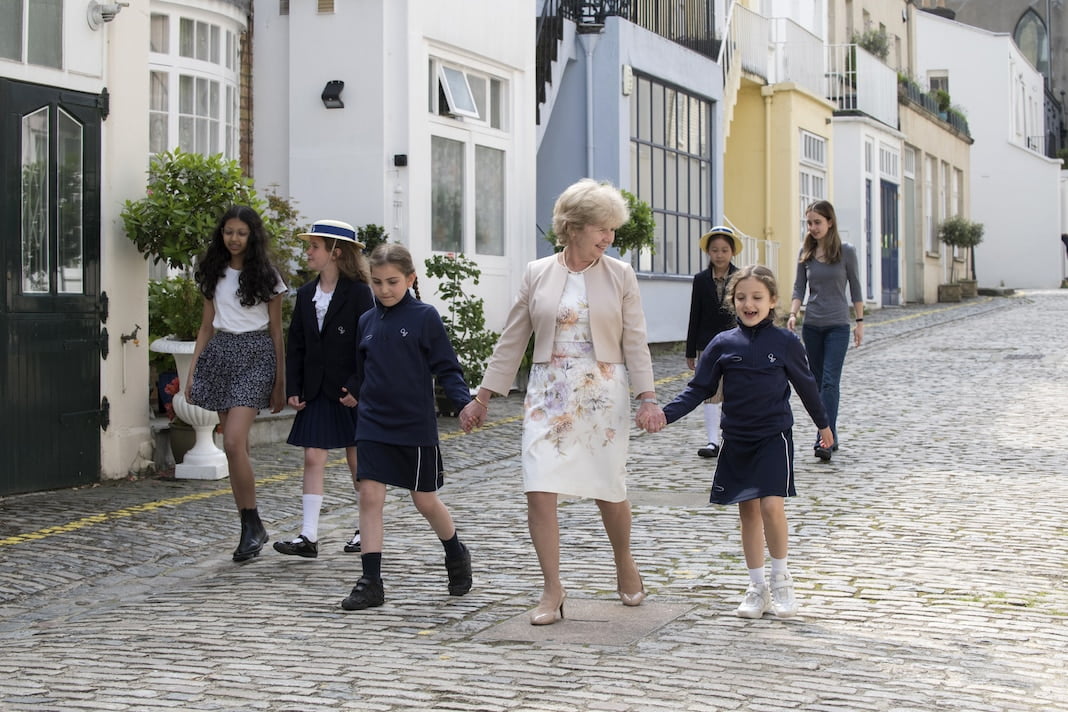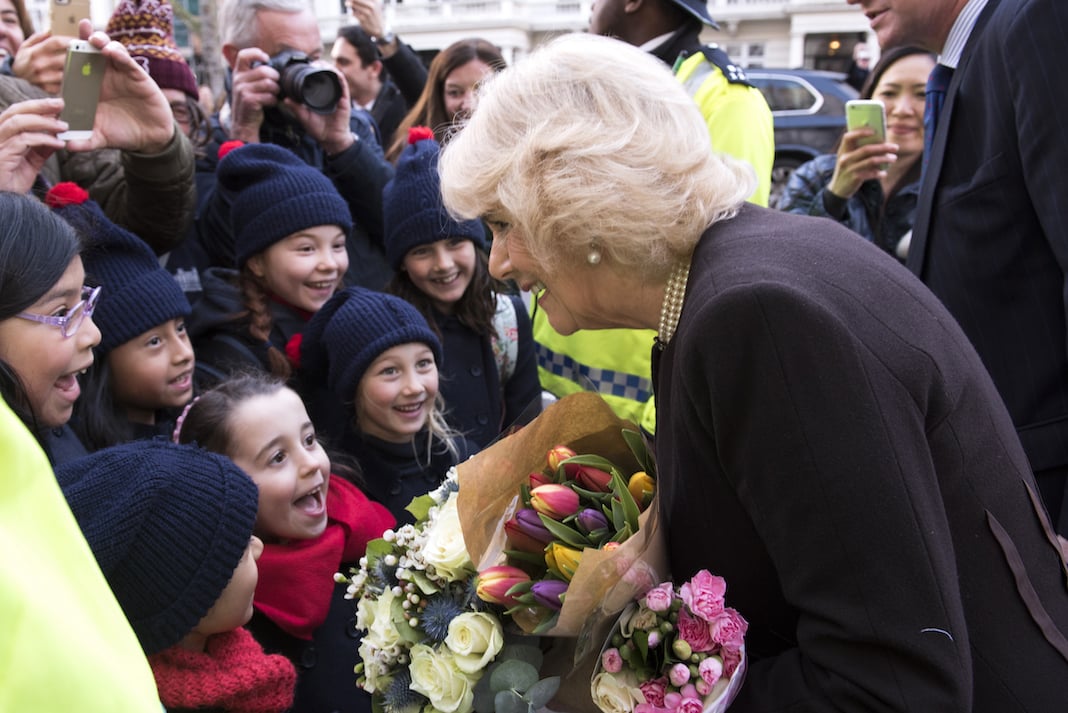Having marked its 130th birthday in 2021, Queen’s Gate is a London school with a rich and remarkable history – and a long tradition of being in the vanguard of educating girls and young women
In the 1860s The Taunton Commission had reached the conclusion that the sexes had equal mental capacity. Despite that, education opportunities for girls remained severely limited in the decades that followed, so this was a time of female education pioneers Miss Eleanor Beatrice Wyatt was one of them, deciding to establish Queen’s Gate School for girls in 1891 (later she would go on to establish Heathfield School).
She opened the school in her parents’ home in Stanhope Gardens, moving it round the corner to 132 Queen’s Gate a year later. Among the traditions that began in those earliest days is The Log – the school magazine was started in 1896 and is still going strong. Another tradition is no school uniform – a rarity among schools then and now, although girls have always had a dress code.

Beatrice Wyatt’s successor was Annabel Douglas, who expanded the lease into 133 Queen’s Gate. Under her tenure the school thrived. Her strong North American connections attracted new pupils from across the Atlantic and that cosmopolitan quality has remained. The school’s South Kensington location put it in prime position for pupils to benefit from the cultural riches of London’s great museums – located just down the road – so it was among the very first to make all London a classroom. Douglas founded the Queen’s Gate Debating Society in 1902 – another tradition still going strong. Girls began sitting public examinations at the turn of the 20th Century and in 1903 the first student was accepted to Newnham College, Cambridge.
As you’d expect, there were some Suffragettes among the cohort. One of the most notable was Lavender Guthrie, who joined the WSU as soon as she turned 18. Arrested first for breaking windows at the National Liberal Club and then for smashing the windows of Garrard jewellers in Mayfair, she was sent down to Holloway. She came to a sad end and mother said at her inquest that she: “was not quite a normal girl. She studied very hard and had ideas of Socialism and giving her life and her all to her more unfortunate sisters”. Queen’s Gate girls and old girls did their bit during the Great War – some as nurses. Jane Trefusis Forbes left school and volunteered for the Women’s Volunteer Reserve in 1916, later becoming first director of the WAAF. In her last entry in The Log, Miss Douglas noted: “Our private affairs, other than tragic, seem very trivial now”.
“The school’s location put it in prime position for the great museums – so it was among the very first to make all London a classroom”
In 1919, Miss Spalding became Principal and bought No. 131 to give more space for the Junior School. She also added a modern science laboratory. Four years on, the school held its first Queen’s Gate election – fitting given the recent enfranchisement of some women; school elections are still held today. Queen’s Gate was recognised by the University of London in 1927, meaning pupils could sit their London Matriculation on the premises.

World War II meant disruption – the school was evacuated to Berkshire after an invitation from the Headmistress of Downe House. All the school basements were commandeered by the London Auxiliary Fire Brigade and one former pupil remaine. The Sub-Commander of the Women’s Section housed in No. 131 was an Old Girl. The school was damaged by bombing raids but was refurbished and back to work by October 1945. The extraordinary Miss Spalding – in service for 43 years – retired in 1951, the same year as the Festival of Britain. Staff hosted a cocktail party in her honour, while the Old Girls Association held a dance.
A new decade, and a new Principal in Mrs Johnston, meant a new House system for the Seniors. The syllabus expanded still further under her successor Mrs Sée, who arrived at the dawn of the 1960s and introduced Chemistry, Biology, Economics and History of Art to A-level options. During the Swinging Sixties, in common with all Londoners, Queen’s Gate girls enjoyed the thriving cultural scene. At some point during these liberating times the front doors were painted purple. Lulu Guinness (1976-78), who was attracted to the school for its exceptional teaching in art and art history later recalled those purple doors in an interview in The Log.

The arrival of Mrs Newnham as Principal in 1971 meant expansion of specialist classroom and science labs. Student and parent needs were changing and she made the decision to close the boarding house to make space for teaching facilities. Queen’s Gate was now a day school for pupils aged 4-18. Under the stewardship of Angela Holyoak, the school continued to increase in size and its reputation also flourished. Its centenary in 1991 was marked by a special service at St Margaret’s Church, Westminster Abbey, followed by a ball – held, fittingly, down the road at the Natural History Museum. Expansion didn’t stop at 100. In fact, in 2006 Queen’s Gate acquired Nos. 125 and 126 Queen’s Gate to accommodate the growing Junior School and new science labs. This enabled part of 131 to become a dedicated Sixth Form Centre, with enhanced teaching and learning facilities to create today’s truly 21st-century learning spaces.
Throughout its long history Queen’s Gate has been ahead of the times, but it has never lost its character – nor its pride in this individuality. The spirit of independence that was there from the start has helped generations of alumnae carve their own paths in the Arts, in business, science and public life. From the Redgrave sisters to Tilda Swinton, Kelly Hoppen and Nigella Lawson. HRH, The Duchess of Cornwall is an Old Girl too – and returned to open new science labs in 2016. Thanks to the many international students who have chosen Queen’s Gate for their London education, there’s also an extraordinary Old Girls’ network around the globe. In fact, as Queen’s Gate Principal Rosalynd Kamaryc puts it: “Wherever you go in the world you bump into a Queen’s Gate Girl.”
Queen’s Gate School queensgate.org.uk
Further reading: Lasting legacy with the DofE Award Scheme
You may also like...






























